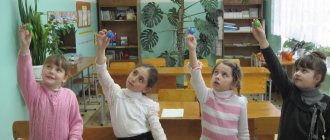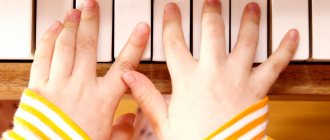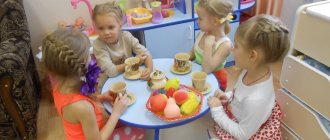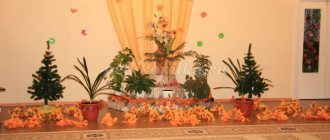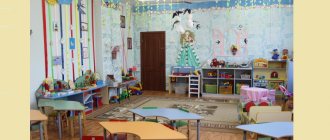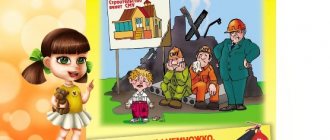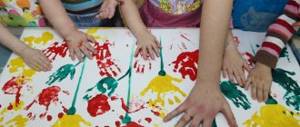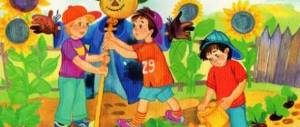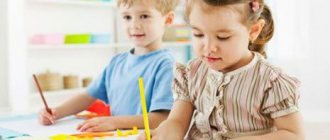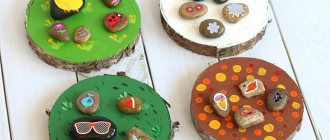Educational situation in the junior group Studying your body
Educational situation in the younger group
"Learning about your body"
Target:
- to form initial elementary ideas about a healthy lifestyle, - to cultivate cultural and hygienic skills; - introduce to the rules of behavior that is safe for humans and the natural world around them; - learn to name the sense organs (eyes, mouth, nose, ear); talk about their role in the body and how to take care of them; - learn to distinguish smells and tastes; — fix the colors, blue, red, yellow, orange; - consolidate the concepts of “many”, “one”; - develop speech, memory, attention; - cultivate a friendly and sensitive attitude towards each other, teach a culture of behavior.
Equipment and material: “Doctor Aibolit” doll; blue fabric, bench; flowers, basket. Picture with a person; sense organs (pictures). Orange, onion, toothpick; pictures with situations,
Progress of the lesson
1. Role-playing game “Meeting with the doctor.”
- Guys, look, we have guests today. Let's say hello to them.
Well, now, I invite you for a walk. Let's go for a walk.
The teacher invites the children to imagine that they are going for a walk.
- Oh, look who's meeting us? (Unnoticedly takes out the Aibolit doll). - Who is this? (Dr. Aibolit.). — What is Doctor Aibolit doing? (He treats people and animals.) - That's right, guys, when we get sick, we always turn to a doctor who helps us get better faster.
Doctor: I invite you to a clearing with magical flowers. But to get there, you need to cross the river on a bridge.
Children perform movements depicting crossing a bridge.
- Be careful not to fall, otherwise you will get your feet wet! - Look at what a beautiful clearing we came to! - How many flowers are there? (A lot.) - Yes, there are so many flowers here! These flowers are not simple, but magical. - Collect one flower each and bring it to me in the basket. - Oh, guys, what beautiful and unusual flowers we collected, would you like to see them?
2. Conversation about human organs.
— What color is this flower? (Yellow.)
What is drawn in the middle of the flower? (Human eye.)
On the back of the flower the teacher reads a poem:
Let's figure it out together, children, what are eyes for in the world? And why do we all have a pair of eyes on our faces?
- How many eyes does a person have? (Two.) - What are eyes for? (To see the world around you, objects.) - Show me where your eyes are. - Look at the doll (children look for the doll with their eyes, and now at the large pyramid, at the aquarium, etc.). - Close your eyes. - You can’t see anything, it’s dark. - When the eyes hurt, a person feels very bad, so they need to be taken care of. - How should you protect your eyes? (Do not pour sand into your eyes, handle sharp objects carefully.) - What objects could these be? (Pencils, stick, fork, etc..) - What do we do with our eyes every morning? (We wash with water.) - Look at the picture, what is the boy doing wrong? (Watches TV very close.)
What color is this flower? (Red.)
What's written on it? (Nose.)
The teacher reads a poem:
There are straight noses, and there are snub noses. I really need any nose, since it has grown to my face.
- Show your nose. - Why do you need a nose? (Children's answers.) - The nose is needed to breathe; air goes through the nose into a person’s lungs. - Let's breathe through our noses too.
Children stand up and, together with the teacher, breathe first with one nostril, pressing the other with a finger, then vice versa. After which they breathe through their entire nose.
— The nose is needed not only to breathe, but also to distinguish odors.
The teacher invites the children to smell the onion first, and then the orange.
— Are these different smells or the same? (Different.) - You see, guys, it turns out that we can’t live without a nose! - How should you take care of your nose? Shows pictures, children name.
- Do not pick your nose with your finger or sharp object.
- Do not put foreign objects into your nose. (Shows a picture of a boy putting a button in his nose.)
- Blow your nose into a handkerchief or clean napkin.
“But you shouldn’t blow your nose too much, it can lead to ear disease.” - What color is this flower? (Orange.) - What is written on it? (Mouth and teeth.) - Show your mouth, say “ah-ah”, knock your teeth. -What is the mouth for? — We put food in our mouth and distinguish its taste. You and I smelled onions, and now we’ll try them. - What kind of bow? (Bitter.) - Now try the orange. What is he like? (Sweet.)
The teacher shows pictures, reinforcing children's knowledge about the taste zones of the tongue.
You should also not put foreign objects in your mouth, eat dirty fruits, or put dirty fingers in your mouth. (Shows a picture.)
What are teeth for? (Chew food.)
— How should you take care of your teeth? Brush your teeth morning and evening with a toothbrush and toothpaste.
Your teeth will be strong and beautiful.
— Do you brush your teeth at home? Well done. — What color is this flower?
What's on it? (Ear.)
Ears, ears, on the top of the animals' heads. And you guys, show me where your ears are?
- How many ears does a person have? (Two.) - Why are ears needed? (To hear different sounds.) - Now will you close your ears, and I’ll say a word and see if you hear it or not? The adult says in a whisper: “Ball.” Invites the children to repeat. Children have heard the words and cannot repeat them. “You see, guys, how important a person’s ears are.” — How should you take care of your ears? Shows pictures.
- Do not put sharp objects into your ears.
- You cannot listen to very loud music.
- You should wash your ears with soap and water.
- And in order to better remember those human organs that we talked about today, I will sing you a song. You listen and repeat.
3. Physical education minute.
Good morning, little eyes! (They lightly touch their eyes.) Are you awake? (Yes.) Good morning, ears! (Shows ears.) Are you awake? (Yes.) Good morning, nose! (Show nose.) Are you awake? (Yes.) Good morning, little mouth! (Shows mouth.) Are you awake? (Yes.) The eyes are watching. Ears listen. The nose is breathing. (Take a deep breath and exhale.) The mouth eats. (Am, am, am.) We woke up!
4. Working with a picture.
— Doctor Aibolit, did you like how our children named the sense organs and helped me tell them? - You know, guys, Aibolit treated one artist and he gave him a painting. Would you like to see?
The teacher shows a poster with a portrait of a boy, but his face lacks eyes, nose, mouth, and ears. Invites the children to complete the portrait and distributes the drawn sense organs. Children attach the necessary organs to their faces: eyes, nose, ears, mouth.
Note. The boy's face and sensory organs are made of flannel fabric.
- Well done! For your work, the doctor gives you toothbrushes.
Brush your teeth, Brush your teeth, both outside and inside, so that they don’t hurt.
The children say thank you, say goodbye to the doctor and go brush their teeth.
